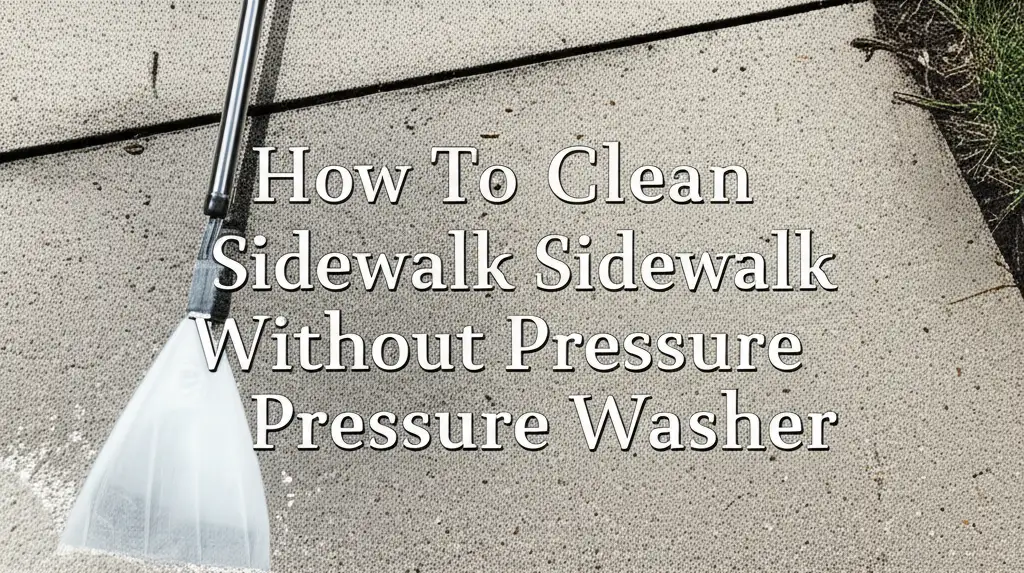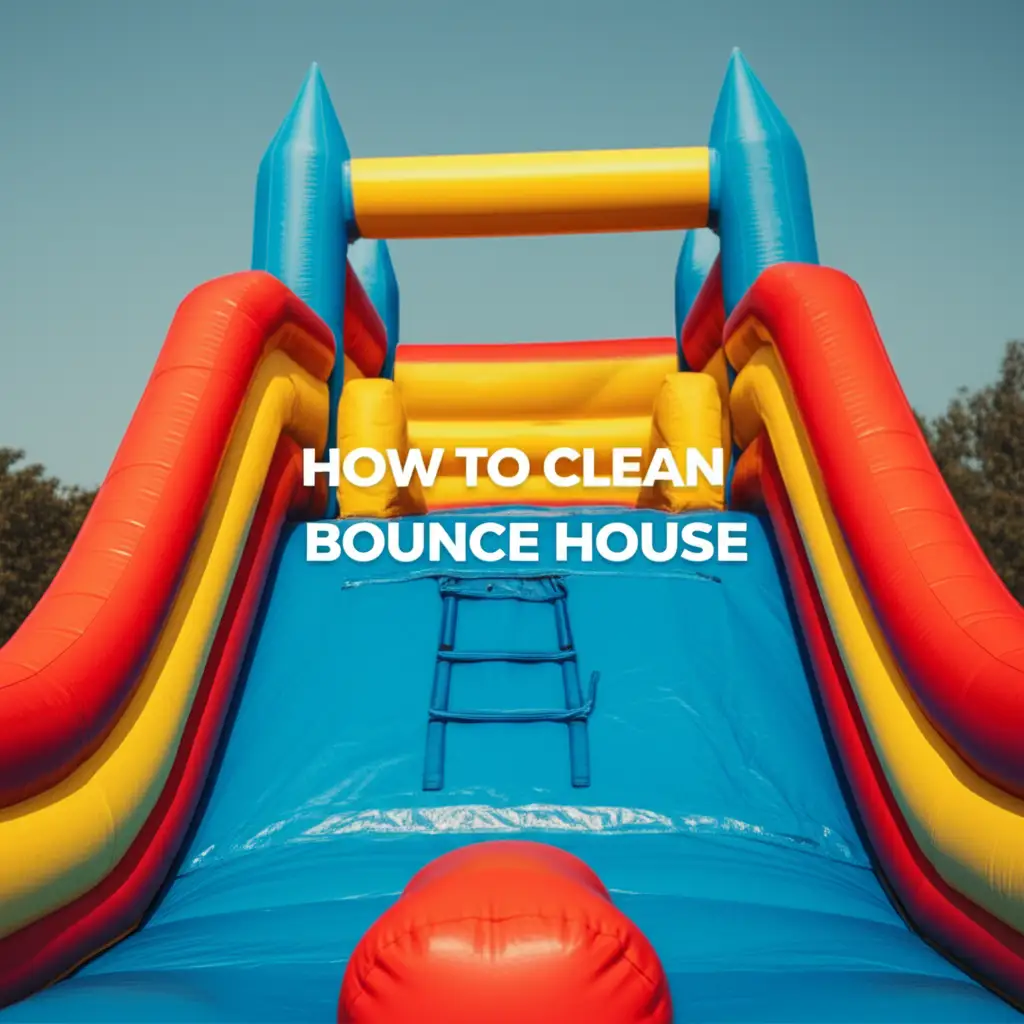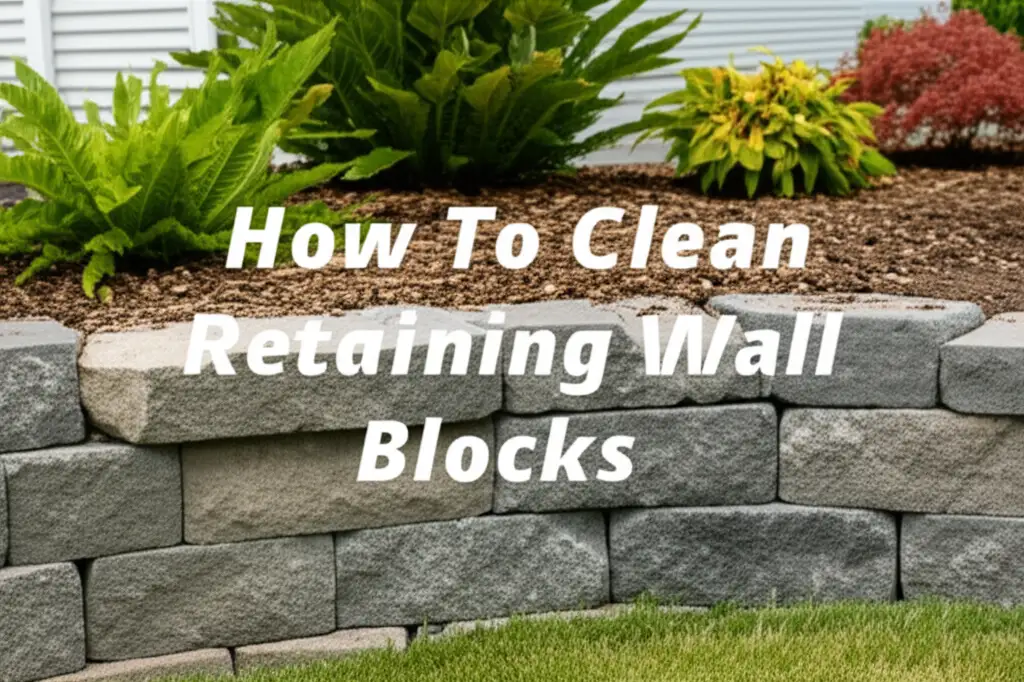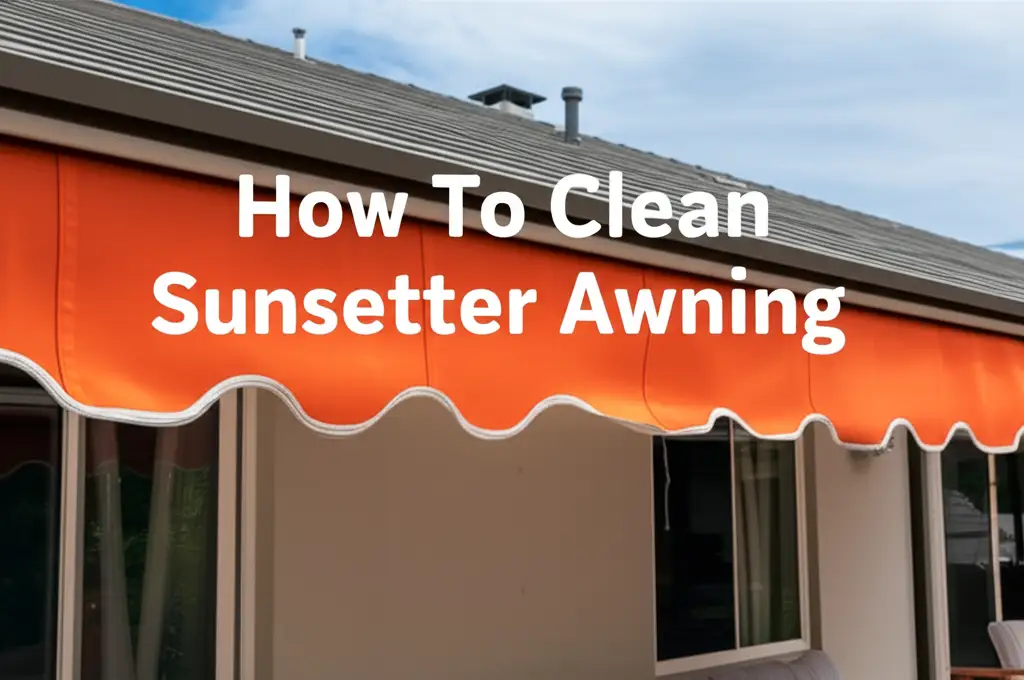· Outdoor Cleaning · 16 min read
How To Clean Algae From Pool Screen Enclosure
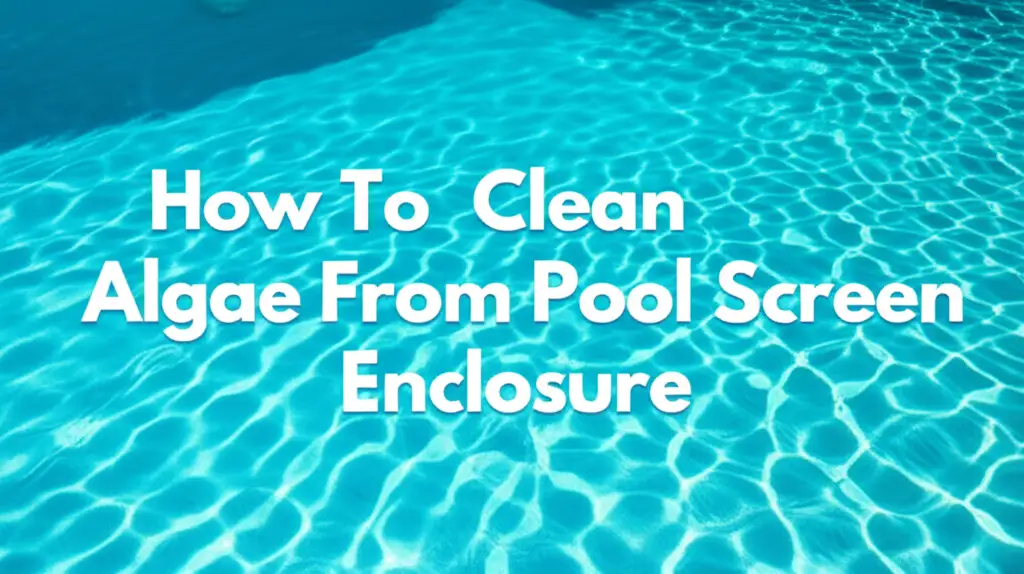
Clean Algae From Your Pool Screen Enclosure
Imagine enjoying your pristine pool area, but then you notice it: green, slimy algae clinging to your pool screen enclosure. It spoils the view and feels unsightly. Cleaning algae from a pool screen enclosure is a common challenge for homeowners, especially in humid climates. This guide helps you tackle that green invader. We provide clear, step-by-step instructions. We will cover the right tools, safe cleaning solutions, and effective techniques. Our goal is to restore your enclosure’s sparkle and maintain its longevity.
Takeaway
- Assess the Algae: Determine the type and extent of algae growth to choose the best cleaning method.
- Gather Tools: Collect safety gear, brushes, sprayers, and cleaning solutions before starting.
- Choose Solutions Safely: Opt for commercial cleaners, bleach, or natural alternatives like vinegar, always diluting and testing.
- Apply and Scrub: Use a sprayer to apply solution and a soft-bristle brush to gently scrub the screens and frame.
- Rinse Thoroughly: Rinse all surfaces with a garden hose, ensuring no cleaning solution remains.
- Prevent Future Growth: Implement regular cleaning, improve drainage, and consider anti-algae treatments to keep algae away.
To clean algae from a pool screen enclosure effectively, use a soft-bristle brush, a garden hose, and a diluted cleaning solution. Options include bleach, commercial outdoor cleaners, or vinegar. Always start by rinsing the enclosure. Then, apply the chosen solution, gently scrub away the algae, and rinse thoroughly from top to bottom.
Understanding Algae Growth on Pool Enclosures
Algae thrive in warm, humid conditions with plenty of moisture. Your pool screen enclosure provides an ideal environment for it to grow. The porous nature of screen materials and the aluminum frames offers places for algae spores to attach. They feed on moisture and microscopic organic matter. This leads to unsightly green or black patches.
Identifying the type of algae helps you choose the right cleaning approach. Green algae are common and often easier to remove. Black algae can be more stubborn, indicating a deeper colonization. Understanding how and why algae grows allows for better prevention. It also helps in more effective removal strategies. Ignoring algae can lead to screen degradation over time. It can also cause odors and affect your pool area’s appearance.
Sunlight, humidity, and poor air circulation contribute significantly to algae buildup. Areas of your enclosure that stay shaded longer are more prone to growth. This is because moisture evaporates slower there. Rainwater can also carry algae spores onto the screens. Once established, algae spreads quickly across the enclosure surfaces. Regular inspection is key to catching it early. Catching it early makes the cleaning process much simpler.
Essential Tools and Safety Preparations
Before you begin cleaning, gather all necessary tools and prioritize your safety. This step ensures a smooth and effective cleaning process. Proper preparation prevents accidents and makes the job much easier. You will need certain items to reach all parts of the enclosure. You also need things to protect yourself from chemicals and falling debris.
First, wear appropriate personal protective equipment (PPE). This includes safety glasses to protect your eyes from splashes. Gloves are important to shield your skin from cleaning solutions. A long-sleeved shirt and pants help prevent skin contact and provide sun protection. Consider a hat if working under direct sunlight. Non-slip shoes are also vital to maintain stable footing on potentially wet surfaces.
Next, collect your cleaning tools. A sturdy ladder or extension pole is essential for reaching high areas. You will need a garden hose with a spray nozzle. A bucket or large container is useful for mixing cleaning solutions. Choose soft-bristle brushes or sponges for scrubbing the screens. Stiff brushes can damage the delicate mesh. Microfiber cloths are good for wiping down frames. Ensure your hose reaches all parts of the enclosure easily.
- Safety Gear:
- Safety glasses or goggles
- Chemical-resistant gloves
- Long-sleeved shirt and pants
- Non-slip shoes
- Cleaning Tools:
- Garden hose with spray nozzle
- Bucket
- Soft-bristle brush (for screens)
- Stiffer brush (for frames, if needed)
- Extension pole or ladder (ensure it is stable)
- Microfiber cloths
Protecting your surroundings is also important. Cover nearby plants or sensitive surfaces with tarps if you use strong cleaning solutions. Move patio furniture or other items away from the cleaning area. This prevents them from getting wet or splashed. Disconnect any electrical items near the enclosure before you start. Ensuring a safe environment makes the cleaning process more efficient and worry-free.
Choosing the Right Cleaning Solution
Selecting the correct cleaning solution is crucial for effectively removing algae without damaging your pool screen enclosure. Different types of algae and varying levels of growth might require different approaches. You have several options, from commercial products to homemade solutions. Always consider the safety of the solution for your enclosure materials and nearby landscaping.
One common and effective solution is a diluted bleach mixture. Bleach is excellent for killing algae and mold. Mix one part household bleach with three to five parts water in a bucket. This mixture works well for tough algae stains. Always test this solution on an inconspicuous area first. This helps ensure it does not discolor or damage your screen or frame. Be careful not to let bleach solution drip onto plants or into your pool water. If it does, rinse those areas immediately with clear water.
For a milder, eco-friendly option, consider white vinegar. Vinegar is a natural disinfectant and effective against many types of algae. Mix equal parts white vinegar and water. This solution is safer for plants and pets. It is a good choice for light to moderate algae growth. While less potent than bleach, it works well with a bit of scrubbing. You can learn more about using natural cleaners like how to clean with vinegar and baking soda. This approach is perfect if you prefer to avoid harsh chemicals.
Commercial screen enclosure cleaners are also available. These products are formulated specifically for outdoor screen materials. Follow the manufacturer’s instructions carefully for dilution and application. Some commercial cleaners contain algaecides that can prevent future growth. Always choose products designed for pool screen enclosures to avoid damage. Read product labels to ensure they are safe for aluminum frames and fiberglass screens.
- Bleach Solution:
- 1 part household bleach
- 3-5 parts water
- Good for tough algae; use with caution.
- Vinegar Solution:
- 1 part white vinegar
- 1 part water
- Eco-friendly, safe for plants; good for light algae.
- Commercial Cleaners:
- Specifically designed for outdoor screens.
- Follow manufacturer’s instructions carefully.
- Some offer preventative benefits.
Remember, the goal is to remove algae thoroughly while preserving your enclosure. Pick a solution that matches the severity of the algae and your comfort level with chemicals. Always apply these solutions evenly. Ensure you rinse them off completely after the cleaning process.
Step-by-Step Algae Cleaning Process
Cleaning your pool screen enclosure requires a methodical approach to ensure thorough algae removal. Following these steps helps you achieve a spotless finish. It also prevents damage to the screens and frames. Work in sections to manage the task effectively.
Step 1: Pre-Rinse the Enclosure
Start by pre-rinsing the entire pool screen enclosure with a garden hose. Use a strong spray nozzle to wash away loose dirt, cobwebs, and surface algae. Begin at the top and work your way down. This initial rinse prepares the surface for the cleaning solution. It also helps to loosen any stubborn debris. Ensure water does not pool excessively around the base of the enclosure. This step makes the subsequent cleaning more effective.
Step 2: Apply the Cleaning Solution
Once the enclosure is wet, apply your chosen cleaning solution. For bleach or vinegar solutions, use a garden sprayer or a soft-bristle brush to apply it evenly. If using a commercial cleaner, follow its specific application instructions. Work from the bottom of the enclosure up when applying the solution. This method prevents streaking and ensures even coverage. Apply enough solution to thoroughly wet the algae-covered areas. Allow the solution to dwell for 5-15 minutes, as recommended by the product or based on the severity of the algae. Do not let the solution dry on the screen.
Step 3: Gentle Scrubbing
After the solution has dwelled, use a soft-bristle brush to gently scrub the screens and frames. Focus on areas with visible algae growth. Apply light to moderate pressure. Avoid scrubbing too hard, as this can damage the delicate screen mesh. For stubborn spots, you may need to apply a little more solution and scrub again. The goal is to loosen the algae without tearing the screen. Pay attention to corners, joints, and the lower sections of the enclosure where algae often accumulate. This methodical scrubbing ensures all algae is dislodged.
Step 4: Thorough Rinsing
Rinsing is a critical step to remove all cleaning solution and detached algae. Start rinsing from the top of the enclosure and work your way down. Use a garden hose with a steady stream of water. Ensure all residue is completely washed away. Pay extra attention to the areas where the screen meets the frame, as solutions can get trapped there. Rinse until the water running off is clear and no suds remain. A thorough rinse prevents streaks and potential damage from leftover chemicals. Proper rinsing also ensures a clean, residue-free finish. This process is similar to how you might approach cleaning other outdoor structures, such as learning how to clean dirty deck without removing stain.
Step 5: Final Inspection
Once the enclosure is fully rinsed, let it air dry. After it dries completely, perform a final inspection. Look for any missed spots or remaining algae. If you find any, repeat the process on those specific areas. Check for streaks or residue from the cleaning solution. A successful cleaning leaves your enclosure looking fresh and vibrant. This final check ensures a job well done and a pristine pool area.
Special Considerations for Tough Algae and Stains
Sometimes, algae can be particularly stubborn. Black algae or long-standing green stains might require more aggressive methods. However, always proceed with caution to avoid damaging your pool screen enclosure. A slow and patient approach is often best. Do not rush the process.
For very tough algae, you might need to increase the concentration of your cleaning solution slightly. For instance, if using a bleach solution, you could try a 1:2 bleach-to-water ratio. Always test this stronger mixture on a hidden spot first. Let the solution sit longer on the stained areas, up to 30 minutes, but do not let it dry. Re-wet the area with the solution if it starts to dry. This extended dwell time allows the chemicals to break down the algae more effectively.
Consider using a soft-bristle brush on an extension pole for hard-to-reach areas. This provides better leverage and pressure for scrubbing. Some areas, like the very top of the enclosure or high corners, are challenging to reach safely. If you cannot reach them from the ground or a stable ladder, consider hiring a professional. Their equipment can often reach heights safely. They also have specialized tools for tough stains.
Pressure washing can be effective, but use it with extreme care. High pressure can easily tear fiberglass screens or warp aluminum frames. If you use a pressure washer, use a wide-angle nozzle (25-40 degrees) and keep the pressure very low, typically below 1200 PSI. Maintain a good distance from the screen, at least 12-18 inches. Always aim the spray at an angle, never straight on. This approach minimizes the risk of damage. It allows the water stream to gently lift the algae. Soft washing, which uses low pressure combined with specialized cleaning solutions, is generally safer and more effective for screen enclosures.
- Increased Solution Strength: For bleach, try 1 part bleach to 2 parts water (test first).
- Longer Dwell Time: Let solution sit for 20-30 minutes, re-wetting if drying.
- Extension Pole: Helps reach high areas and apply more targeted pressure.
- Low-Pressure Washing (Soft Wash):
- Use wide-angle nozzle (25-40 degrees).
- Keep pressure below 1200 PSI.
- Maintain 12-18 inches distance from screen.
- Spray at an angle to avoid damage.
If stains persist after repeated attempts, the screen material might be permanently discolored or compromised. In such cases, replacing the affected screen panels might be the only option. Before resorting to replacement, exhaust all gentle cleaning methods first. Tough algae removal needs patience and the right technique.
Preventing Future Algae Buildup
Once your pool screen enclosure is clean, preventing future algae growth is key to maintaining its pristine condition. Proactive measures can save you time and effort in the long run. Regular maintenance routines are far easier than deep cleaning. A clean enclosure enhances your pool experience.
Regular rinsing is one of the simplest preventative steps. Periodically, perhaps once a month or after heavy rain, rinse your enclosure with a garden hose. This washes away any new algae spores, dirt, and pollen before they can establish themselves. Focus on areas that tend to get more moisture or less sunlight. This simple action can drastically reduce algae buildup.
Improving air circulation around the enclosure helps keep it dry. Trim back any overgrown shrubs or trees that might be touching the screens. Good airflow allows surfaces to dry quickly after rain or humidity. This reduces the moist conditions that algae love. Ensure proper drainage around the base of the enclosure. Standing water provides an ideal breeding ground for algae. Divert rainwater away from the enclosure’s base.
Consider applying an anti-algae or mold inhibitor treatment after cleaning. These products create a hostile environment for algae growth. They are typically applied after the screen is clean and dry. Follow the product instructions carefully for application frequency and method. Some are designed to last for several months. This forms a protective barrier on the screen and frame.
- Regular Rinsing: Rinse monthly with a garden hose to remove new spores.
- Improve Air Circulation: Trim nearby plants to allow better airflow.
- Ensure Good Drainage: Prevent standing water around the enclosure base.
- Apply Anti-Algae Treatments: Use protective sprays after cleaning for extended prevention.
Address any leaks in your pool or surrounding structures promptly. Constant drips or splashes provide continuous moisture for algae to thrive. Inspect your pool’s filter system regularly. A well-maintained pool filter, like understanding how to clean sand filter for above ground pool, contributes to overall pool hygiene. This reduces the organic matter that algae can feed on. By taking these preventative steps, you will keep your pool screen enclosure looking clean and inviting throughout the year.
Professional Cleaning vs. DIY
Deciding between professional cleaning and a do-it-yourself approach depends on several factors. Consider the severity of the algae, your comfort level with heights, and the time you have available. Both options have their advantages and disadvantages. Understanding these can help you make an informed choice for your pool screen enclosure.
DIY cleaning is cost-effective. You only pay for materials and tools. It gives you direct control over the process and products used. If you have light to moderate algae growth, a DIY approach is very feasible. You can schedule the cleaning at your convenience. This method works well for those who enjoy outdoor projects. However, it requires time, effort, and careful adherence to safety guidelines. Reaching high areas safely can be a challenge. Incorrect cleaning solutions or pressure washing techniques can damage the screen.
Professional cleaning services offer expertise and specialized equipment. They have experience with different types of algae and screen materials. Professionals often use soft washing techniques, which are safer for delicate screens. They also have the right safety gear and tools to reach all parts of the enclosure efficiently. This option saves you time and effort. It provides peace of mind, knowing the job is done correctly and safely. Professionals can also apply long-lasting preventative treatments. However, professional services come at a higher cost. It is an investment in your property’s appearance and longevity.
- DIY Cleaning:
- Pros: Cost-effective, full control, suitable for light algae.
- Cons: Time-consuming, physical effort, safety risks (heights, chemicals), potential for damage if not careful.
- Professional Cleaning:
- Pros: Expert knowledge, specialized equipment (soft wash), safety assurance, time-saving, long-lasting results.
- Cons: Higher cost.
For small, manageable algae spots, DIY is a great option. For extensive, severe algae buildup, or if you lack the necessary tools or comfort with heights, professional help is often the better choice. Weigh the pros and cons based on your specific situation. Prioritize safety and the long-term health of your pool screen enclosure. A properly cleaned enclosure enhances your outdoor living space.
Frequently Asked Questions
Is it safe to use bleach on pool screen enclosures?
Yes, using a diluted bleach solution is generally safe for pool screen enclosures. Mix one part household bleach with three to five parts water. Always test the solution on a small, hidden area first. Rinse thoroughly after cleaning to prevent damage and ensure no residue remains.
How often should I clean my pool screen enclosure for algae?
The frequency depends on your climate and algae growth rate. In humid areas, monthly rinsing and a deeper clean every 3-6 months may be necessary. In drier climates, once or twice a year might suffice. Regular visual inspections help you determine when cleaning is needed.
Can I use a pressure washer to clean algae from my pool screen?
Use a pressure washer with extreme caution. High pressure can easily damage screen mesh. If you must use one, opt for a very low-pressure setting (under 1200 PSI) and a wide-angle nozzle (25-40 degrees). Maintain a good distance and spray at an angle. Soft washing is a safer alternative.
What are natural alternatives to bleach for cleaning algae?
White vinegar is an excellent natural alternative. Mix equal parts white vinegar and water for a milder, eco-friendly solution. It is effective for light to moderate algae growth. You can also find commercial non-toxic, biodegradable outdoor cleaners designed for screens.
How can I prevent black algae from returning to my pool screen enclosure?
To prevent black algae, maintain excellent air circulation around the enclosure by trimming plants. Ensure proper drainage to avoid standing water. Consider applying a commercial anti-algae treatment after cleaning. Regular rinsing also helps remove spores before they establish.
Will cleaning my screen enclosure damage nearby plants or my pool water?
Strong cleaning solutions, like bleach, can harm plants and affect pool water chemistry. Always cover nearby plants with tarps before cleaning. Rinse any splashes on plants immediately with clear water. Avoid letting cleaning solutions drain directly into your pool.
Conclusion
Cleaning algae from your pool screen enclosure is a task that brings significant rewards. It restores the beauty and clarity of your pool area. We have explored the reasons for algae growth. We also covered the essential tools and safety measures required. We provided detailed steps for effective cleaning. Remember to choose the right cleaning solution, whether it is a gentle vinegar mix or a stronger bleach solution. Always test first and rinse thoroughly.
Regular maintenance and preventative measures are key to keeping your enclosure algae-free. Small efforts, like periodic rinsing and ensuring good air circulation, make a big difference. Consider applying anti-algae treatments for long-lasting protection. Whether you choose a DIY approach or hire professionals, a clean enclosure enhances your outdoor living space. You now have the knowledge to confidently tackle algae. Enjoy your clean, inviting pool area all year round.
- pool screen enclosure
- algae removal
- outdoor cleaning
- screen enclosure maintenance
- pool area cleaning
- soft washing
- DIY cleaning

